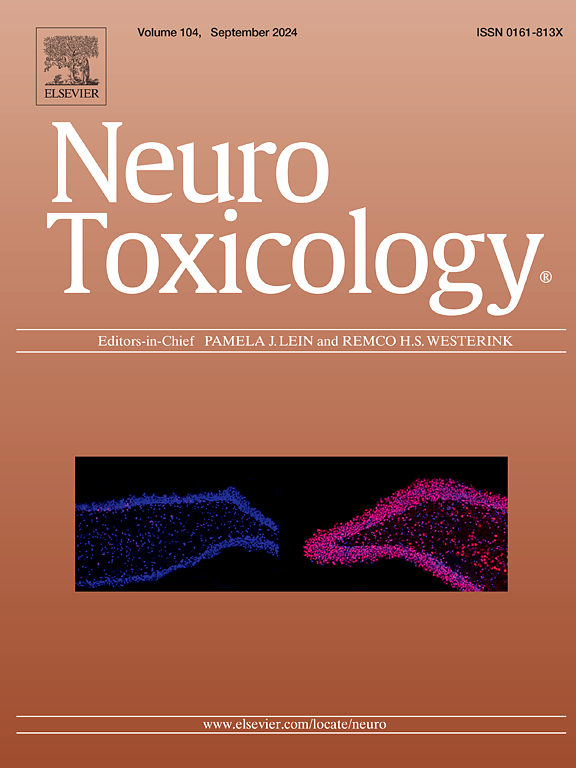A reference list of neurotoxicants based on CLP harmonised classifications
IF 3.9
3区 医学
Q2 NEUROSCIENCES
引用次数: 0
Abstract
With the societal interest to decrease experimental animal testing for regulatory purposes, the need for reliable new approach methods (NAMs) has become evident. To ensure the continued safe use of chemicals, NAMs should perform ideally at a comparable or better level of sensitivity and specificity as the in vivo modalities that they aim to replace, especially if they are to be used for hazard assessment. The use of relevant reference substances, selected with transparent criteria, forms a cornerstone of developing and validating (in silico and in vitro) NAMs. Claims on sensitivity and specificity should be based on results generated with reference chemicals that were previously scrutinised by independent expert panels on whether the substance has a hazardous property. CLP (Regulation (EC) No 1272/2008 on the classification, labelling and packaging of substances and mixtures) forms a key pillar in EU chemicals management. The evaluation of all available information by the Committee for Risk Assessment (RAC) and their comparison to CLP classification criteria creates the opportunity to objectively compile lists of positive reference substances. We collated a reference list of neurotoxic substances to aid in the development of neurotoxicity NAMs. We screened CLP Annex VI and reflected on existing reference lists and mode of action data. The identified substances included industrial chemicals and active substances in plant protection products and biocidal products. This list of neurotoxicants is not an exhaustive consensus list, which ideally would be the result of combining this list with those generated by other authorities or expert groups.
基于CLP统一分类的神经毒物参考清单。
随着社会对减少实验动物试验的兴趣,对可靠的新方法(NAMs)的需求已经变得明显。为了确保化学品的持续安全使用,NAMs的理想灵敏度和特异性水平应与它们旨在取代的体内模式相当或更好,特别是如果它们将用于危害评估。使用以透明标准选择的相关参考物质,是开发和开发硅和体外NAMs的基石。关于敏感性和特异性的声明应以参考化学品产生的结果为基础,这些结果应事先由独立专家小组审查该物质是否具有危险特性。CLP(法规(EC) No 1272/2008关于物质和混合物的分类、标签和包装)是欧盟化学品管理的关键支柱。风险评估委员会(RAC)对所有可用信息的评估及其与CLP分类标准的比较创造了客观编制阳性参比物质清单的机会。我们整理了一份神经毒性物质的参考清单,以帮助开发神经毒性命名。我们筛选了CLP附件六,并反思了现有的参考清单和行动模式数据。鉴定的物质包括工业化学品和植物保护和生物杀灭产品中的活性物质。这份神经毒物清单并不是一份详尽的共识清单,理想情况下,这份清单应与其他权威机构或专家组编制的清单相结合。
本文章由计算机程序翻译,如有差异,请以英文原文为准。
求助全文
约1分钟内获得全文
求助全文
来源期刊

Neurotoxicology
医学-毒理学
CiteScore
6.80
自引率
5.90%
发文量
161
审稿时长
70 days
期刊介绍:
NeuroToxicology specializes in publishing the best peer-reviewed original research papers dealing with the effects of toxic substances on the nervous system of humans and experimental animals of all ages. The Journal emphasizes papers dealing with the neurotoxic effects of environmentally significant chemical hazards, manufactured drugs and naturally occurring compounds.
 求助内容:
求助内容: 应助结果提醒方式:
应助结果提醒方式:


